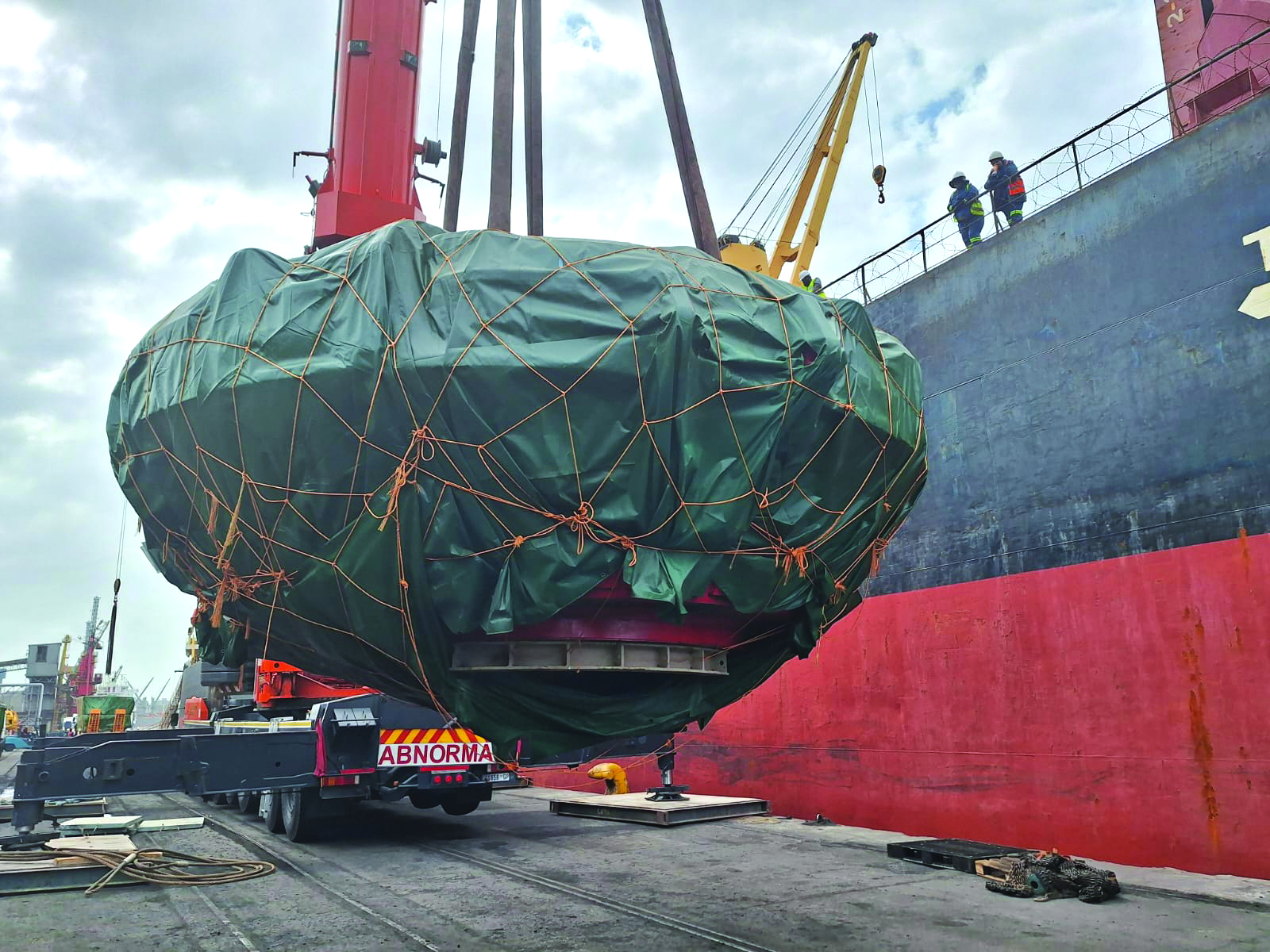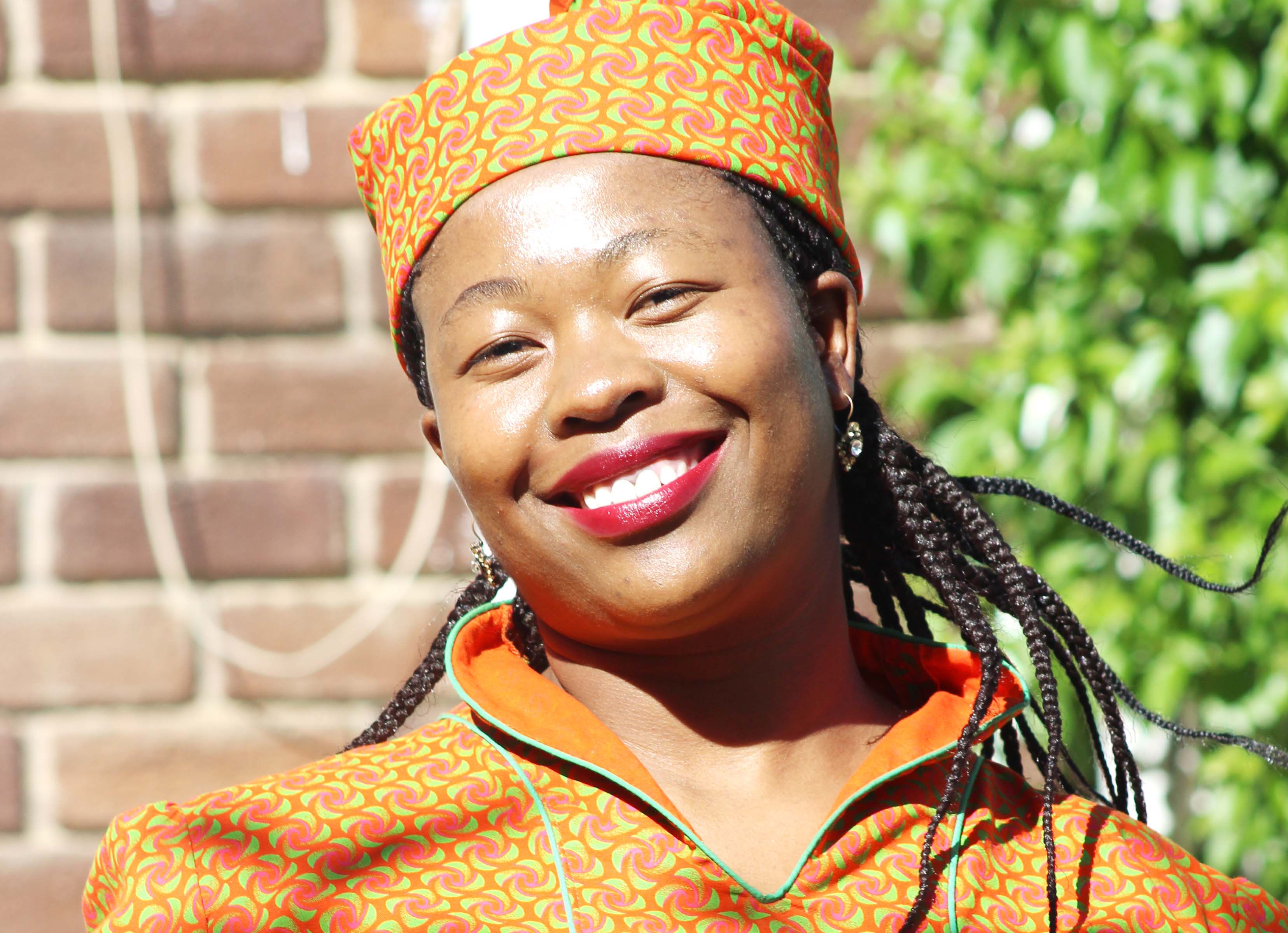
THE Lesotho Highlands Development Authority (LHDA) is thrilled that the first of two double-shielded Tunnel Boring Machine (TBM) designed to excavate the 38-kilometre Polihali Transfer Tunnel from the Leribe side arrived at Maydon Wharf in Durban, South Africa on 26 August 2024.
This milestone represents a significant advancement in the construction of Phase II of the Lesotho Highlands Water Project (LHWP II).
Offloading of the Thor Mercury, the ship that brought the machine from China to South Africa will take at least four days.
The TBM will then be loaded, onto a convoy of abnormal load carriers to transport the TBM to site, at Ha Bereng in Leribe. TBM components, including its shields and cutter head, departed from the Shanghai Port in China from 20 July 2024. Weighing over 900 tons and measuring 350 meters in length once fully assembled, this massive machine’s arrival signals the acceleration of tunnel excavation activities.
In keeping with tunnelling tradition, the TBM will be given a Sesotho name which will live on in the legacy and narrative of the Lesotho Highlands Water Project.
The LHDA is inviting Basotho from across the country and the diaspora to join in the tradition to celebrate its imminent arrival by entering the tunnel boring machine naming competition. The competition started on 28th August 2024 and is running on multiple platforms, including Facebook, Twitter, LinkedIn and local radio stations
Competition participants should consider one or more of the following criteria when choosing their names:
- A legend from the Leribe district, the area of the tunnel excavation.
- A leader who demonstrated strength, resilience, and dedication to her community.
- A leader who fostered relationships between their community and others.
- A Mosotho scientist or pioneer in science and mathematics who encouraged youth to pursue science-related fields.
- A leader who has advocated for peace between Lesotho and South Africa.
- An individual who has made significant contributions to Leribe’s infrastructure, education, or business sectors.
- Alternatively, a name that embodies strength, power and tenacity, that has relevance to Lesotho, and Leribe as the area where the first TBM is going to work.
The LHDA invites the public to submit their suggestions for names of the TBM through, sending direct messages to the inboxes of LHDA pages on Facebook and LinkedIn, in person at any of the LHDA offices in Maseru, Mohale, Katse, ‘Muela and Polihali, as well as through calling into LHDA Radio shows that are hosted across various radio stations.
The LHDA will further conduct outreaches to schools, communities and urban centres where the public can submit their suggestions for the TBM name.
An internal panel will shortlist the top 10 most meaningful and creative names which will be announced across the same platforms. Subsequently, the LHDA will open public voting across the same platforms to determine the winning name, which will be bestowed on the TBM on its arrival in Lesotho. The contestant who proposes the winning name will become part of Lesotho Highlands Water Project history, receiving recognition and prizes at the naming ceremony.
On its arrival in Lesotho, the TBM parts will be transported to the Katse TBM access adit at Ha Bereng, where the preparation works are already underway to receive the TBM. Assembly of the TBM prior to the start of its digging journey is expected to take approximately 50 days.
Manufactured by CCCC Tianhe of China specifically for the excavation of the Polihali to Katse Transfer Tunnel, the TBM was designed by Robbins, a U.S.-based company renowned for its expertise in tunnelling technology.
In addition to the much-anticipated arrival of the Tunnel Boring Machine (TBM) in the country, August saw significant milestones for the Transfer Tunnel construction.
These included the successful breakthrough of the upper intake tunnel into the lower intake tunnel on 19 August, after seven months of tunnelling, and the commencement of Polihali’s gate shaft excavation using the raise boring method on 26 August. The intake tunnels will allow water from the 5 042-hectare Polihali reservoir to enter the transfer tunnel for delivery to the Katse reservoir, the centre point of the Lesotho Highlands Water Project.
The Polihali to Katse Transfer Tunnel is a key component of Phase II of the Lesotho Highlands Water Project. It will facilitate the gravity transfer of water from the Polihali reservoir to the Katse reservoir. The tunnel will be excavated using both tunnel boring and drill-and-blast methods from the Leribe and Polihali ends. The Polihali TBM is scheduled to be shipped to Lesotho early next year and will also receive a name in similar fashion.
The Polihali Transfer Tunnel works include intake works and a gate shaft at the Polihali reservoir, outlet works and a gate shaft at the existing Katse reservoir with an underwater connection to the lake, and access adits to the waterway, along with associated construction infrastructure.
The tunnel was designed by MSKC, a consultancy supervising the construction while the Kopano Ke Matla Joint Venture, comprising Yellow River Company, Sinohydro Bureau 3, and Unik Civil Engineering, is constructing the tunnel.







